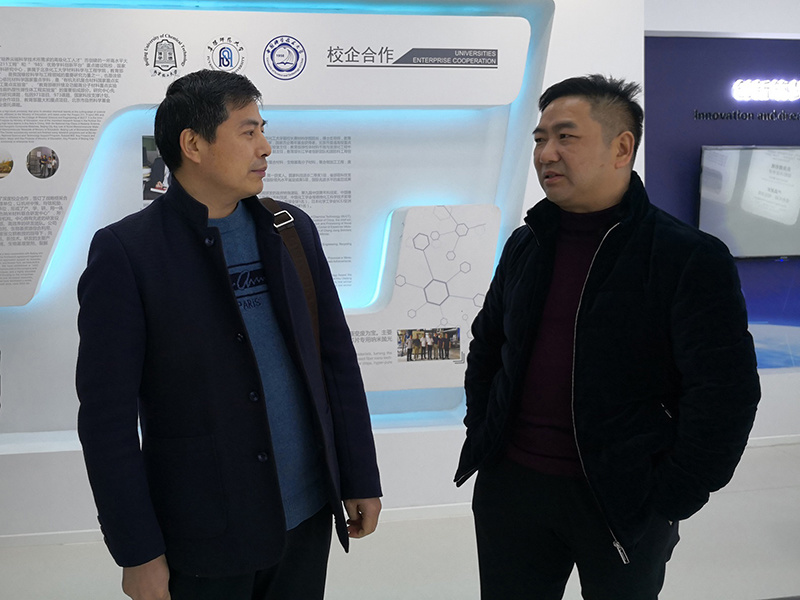News
Leaders from Anhui Provincial Circular Economy Research Institute visited EVOSIL
31 Jan,2021
On January 29, 2021, Chen Jinsheng, vice president of Anhui Circular Economy Research Institute (CERI) and the others visited EVOSIL.

Mr. Chen visited the EVOSIL company exhibition hall, listened to the staff's detailed introduction to EVOSIL, and watched the EVOSIL product introduction video.



Shao Jin, Chairman of EVOSIL, introduced to Mr. Chen the scientific research innovations, school-enterprise cooperations, product advantages, customer developments, application areas and future development plans of EVOSIL products in details. Mr. Chen affirmed the development and achievements of EVOSIL, and expressed his willingness to give EVOSIL more support and help under the leadership of the CERI.

Chairman Shao Jin said that EVOSIL will work together with CERI in the high-value utilization of straws and rice husks and the development of circular economy to make greater contributions to society.

About Anhui Circular Economy Research Institute (CERI):
On December 17, 2009, with the approval of the Department of Science and Technology of Anhui Province and the Department of Civil Affairs, the Anhui Provincial Circular Economy Research Institute (CERI) was formally established. The honorary appointments were Tang Honggao, former member of the Central Committee of the Communist Party of China, former party secretary and president of the University of Science and Technology of China; and He Duohui, academician of the Chinese Academy of Engineering; The director, Ji Kunsen, deputy director of the 9th and 10th Standing Committee of the Anhui Provincial People's Congress. 15 special researchers including Zheng Yongfei, academician of the Chinese Academy of Sciences, Liu Qi, special researcher of the State Council's Counselor's Office, and 115 experts in various fields were invited.
The current legal person Lu Qiang is a member of the 11th and 12th Anhui Provincial Committee of the CPPCC, an expert in the key think tank of the Anhui Provincial Party Committee, and an expert in the high-end scientific and technological innovation think tank of the Anhui Association for Science and Technology.
Previous article
Goodyear sets goal to double use of rice husk ash silica by 2021
Related News
Rice husk white carbon black: Opportunities and Innovations from Rice By-products


